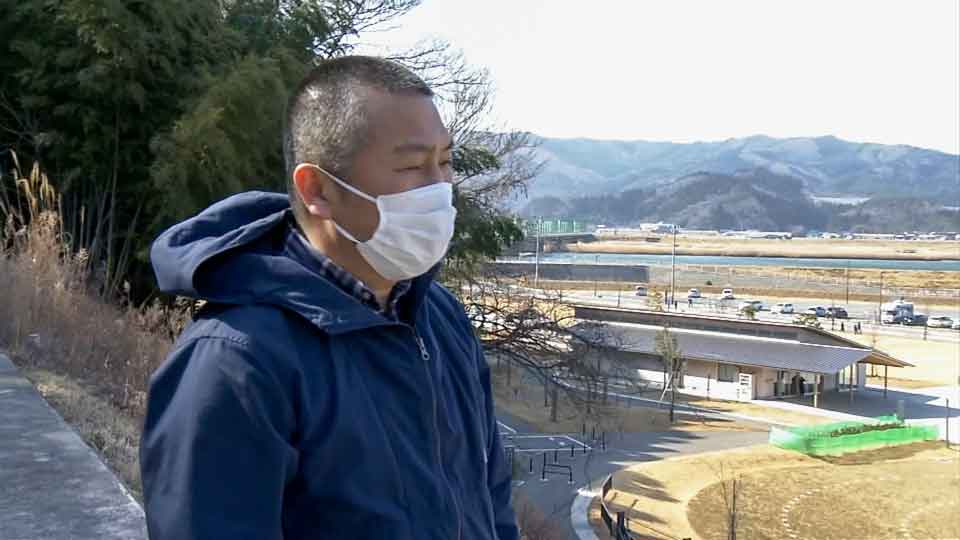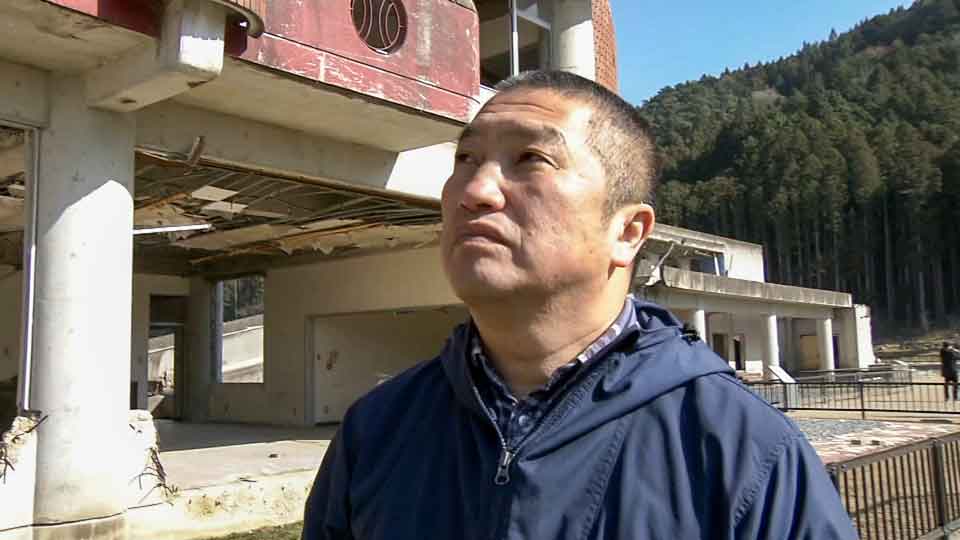- Okawa Elementary School in Miyagi Prefecture was swallowed by a tsunami after the 2011 Great East Japan Earthquake. Seventy-four students and 10 teachers died or remain missing.
- The teachers kept the children in the schoolyard until it was too late.
- Hiratsuka Shinichiro lost his daughter. To understand why the school didn't quickly usher the students to safety, he has spent years studying crisis psychology.
A simple question

For the past 11 years, the sight of a hill right in front of the schoolyard at Okawa Elementary School has prompted many to ask: Why didn't the staff evacuate the students to higher ground as the tsunami approached?

The school, 4 kilometers from the coast, was submerged up to its roof. To this day, the mangled concrete pillars are powerful evidence of the sheer force of the water.
Three minutes after the earthquake, authorities warned that a tsunami was sweeping toward the coast. But the school kept the students in the schoolyard for 50 minutes. By the time they began to move them to a slightly higher spot beside a river, it was too late – a wall of water came crashing in.
Dream to be like dad

"If only they had climbed up here," says Hiratsuka Shinichiro, standing on a reinforced plateau in the middle of the hill. He points to a sign a few meters below him that shows the height of the tsunami.

Hiratsuka is a teacher who now serves as principal of a junior high school. He lost his 12-year-old daughter Koharu in the tragedy at Okawa Elementary School. He says she was a sweet child who doted on her younger brother and sister. She wanted to become a teacher one day, like her father.
Court ruling provides no closure

Desperate to understand why the teachers failed to get the children out of the schoolyard as quickly as possible, a group of families sued the city and the prefectural governments in 2014.
In 2019, Japan's Supreme Court upheld a ruling from the previous year which found the school had failed to designate a site where staff and students should evacuate. The court also said schools must have a higher level of disaster preparedness than ordinary members of the public.

But Hiratsuka wasn't satisfied. "I still felt frustrated, because I'd never heard a single convincing reason for what happened that could help me come to terms with it."
He has immersed himself in the study of disaster preparedness. He spent years reading up on the subject and listening to experts in the field. Eventually he discovered an area of research called crisis psychology, and it helped him make sense of the tragedy that took his daughter's life.
"I finally understood," he says. "It was such an unexpected disaster that it may have affected the mental state of the school staff."
Wishful thinking

In response to the court ruling, Miyagi Prefecture started using the former school grounds to provide disaster management training for teachers, and enlisted Hiratsuka as a lecturer.
One of the lessons he teaches is about "Normalcy Bias," a mindset where people disbelieve or minimize threats in order to cope.

The area in and around the school had not been designated as a tsunami warning zone. Some residents in the neighborhood even went to a community center right next to the school after the earthquake struck. When a parent urged a teacher to evacuate students up the hill, the teacher responded by saying it was safe where they were.
"The ground shook violently," Hiratsuka says. "People knew this was a massive earthquake. But nobody believed a tsunami would come this far inland. It had never happened before."
Everyone follows someone else

"Majority Synching Bias" is a term for another type of mindset that can put people at risk. It's the tendency to follow what the majority of a group is doing to gain a sense of security, even in the absence of evidence that it's the best course of action.
Hiratsuka notes that many people, including residents who had headed toward the area of the school for safety, remained calm. He believes this may have encouraged the teachers to think everything would be fine.
He also studied a condition known as "Psychological Detention." This is the tendency to stick to a decision even after doubts arise about whether it's the right one.
Once the teachers had decided to shelter in the schoolyard, they shifted their focus to keeping the children calm. "No one saw the bigger picture," Hiratsuka says.
Prepare for the worst

In the training program for teachers, Hiratsuka emphasizes the importance of being prepared for the worst. Even if that doesn't come to pass, he says it's better to be criticized for doing too much than not enough, and putting yourself or others in danger as a result.
Hiratsuka concedes it's difficult to be perfectly prepared for a natural disaster that will occur at a time and in a way that can't be predicted. Regardless, he says, "Schools must resolve to put top priority on the lives of students."
No more regrets
By sharing this knowledge with teachers and children across Japan, Hiratsuka is honoring the memory of Koharu. "I don't want to have any regrets. I want to prevent another Okawa school tragedy. I will do all I can to save as many lives as possible. If I can make someone smile, then I will smile too, and that will also make my daughter smile," he says.
Teaching lessons is one thing. But getting people to take the words to heart is another. Hiratsuka hopes his passion and personal connection to the issue will be enough to make a difference.


